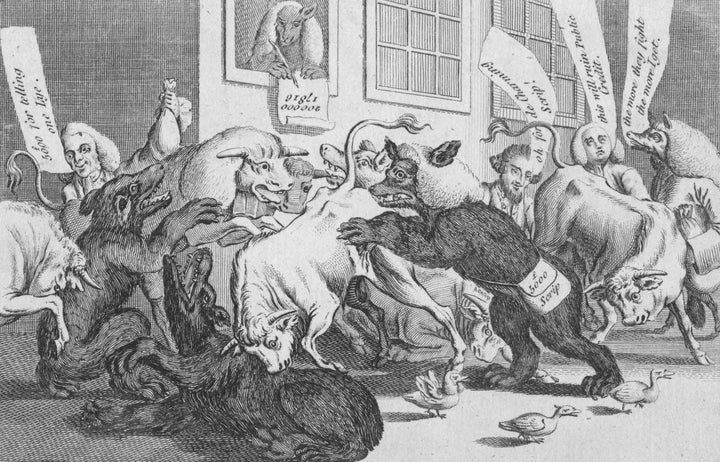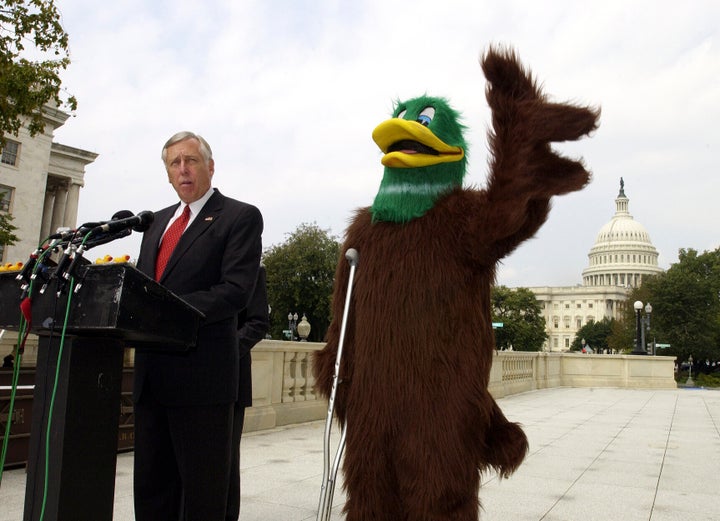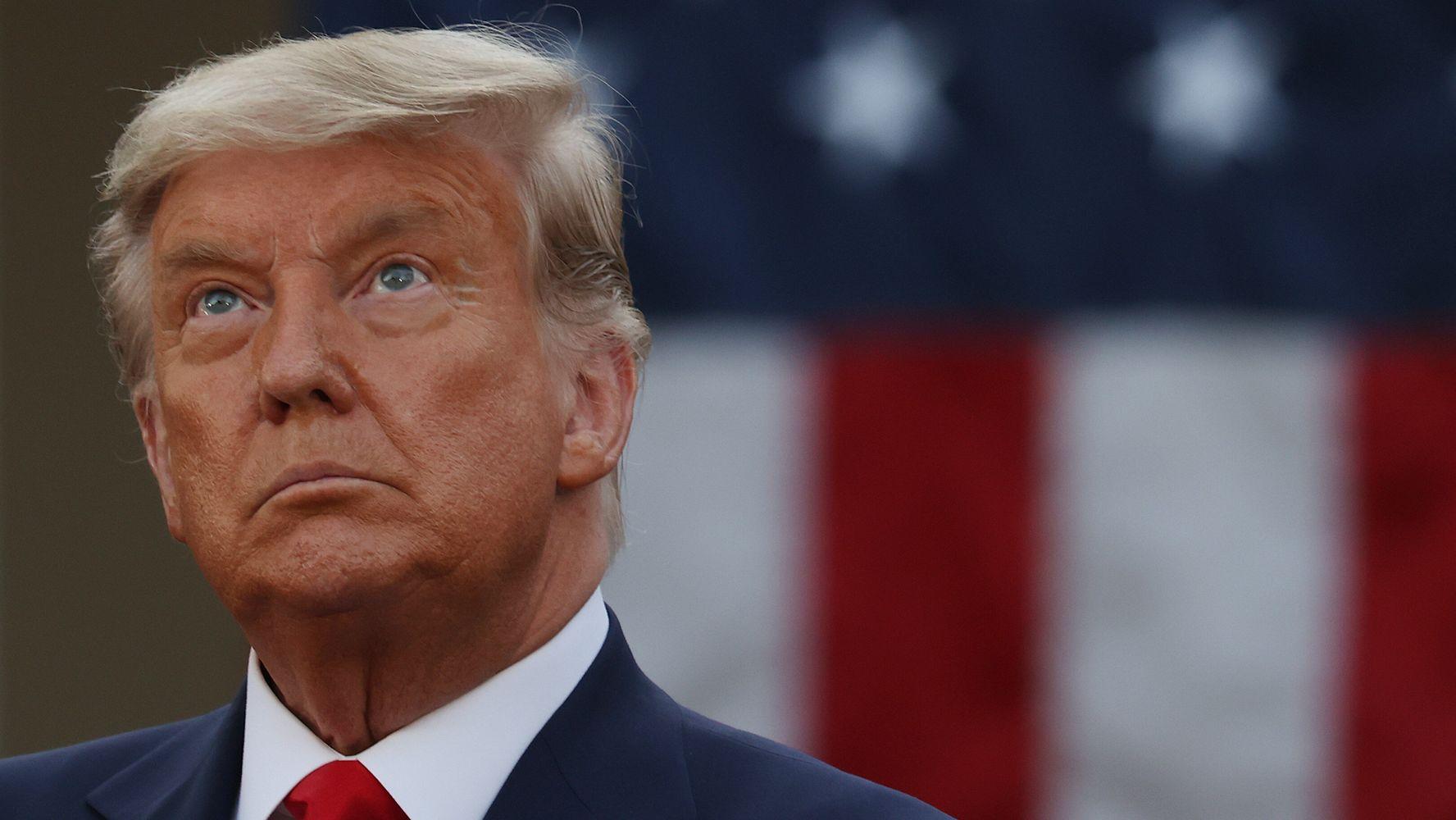Following the election of former Vice President Joe Biden, President Donald Trump is in the “lame duck” period of his one-term presidency. This new era has spawned many cartoons and even merchandise featuring Trump illustrated as a duck.
But why is an outgoing president called a lame duck, anyway? It turns out the term dates back centuries.
The earliest reported reference to the term comes in a December 1761 letter written by British historian and politician Horace Walpole to Sir Horace Mann.
“Do you know what a Bull, and a Bear, and a Lame Duck are?” he asked, alluding to a phrase used in the Exchange Alley, or “Change Alley,” coffeehouses that evolved into the London Stock Exchange.
“Lame duck” described a person who defaulted on his debt. The idea was that this trader would be powerless and vulnerable to predators, like a duck unable to keep up with its flock. Unable to pay up, the defaulter has to “waddle” off.
In 1771, playwright David Garrick wrote, “Change-Alley bankrupts waddle out lame ducks!” in the prologue to Samuel Foote’s play “The Maid of Bath.”

The term remained in use into the 19th century and eventually reached the U.S. financial markets and other areas of culture. “Lame duck” reportedly appeared in naval contexts to refer to an “old, slow ship” as well.
In 1869, writer George W. Bungay used the phrase in reference to supporters of the temperance movement who faltered in their commitment over time.
“In Wall Street, New York, we have a class of men known as ‘lame ducks’: they have met with financial disasters, and can not keep pace with their more successful competitors,” he wrote. “We have lame ducks in our temperance associations, and I will briefly classify some of the men and women who do not and who will not keep up with our progressive organization. The lame ducks were once out-and-out friends of ‘the cause.’ … When they have attempted to swim in whisky, they have become ‘dead ducks.’”
The political application of the term appeared around the same time. In 1844, a writer for the Gettysburg, Pennsylvania, newspaper The Compiler opined about presidential candidates: “Henry Clay is acknowledged to be first rate at the game of brag, but [James K.] Polk will make a lame duck of him.” President Abraham Lincoln reportedly once said, ”[A] senator or representative out of business is a sort of lame duck. He has to be provided for,” per the Online Etymology Dictionary.
And according to a January 1863 issue of The Congressional Globe (a record of the official proceedings of the U.S. Congress in the mid-1800s), Sen. Lazarus W. Powell of Kentucky stated, “In no event, either as originally organized or as now organized, could [the Court of Claims] be justly obnoxious to the charge of being a receptacle of ‘lame ducks’ or broken down politicians.”
In the early 20th century, “lame duck” began to refer more specifically to politicians who had lost their recent elections but hadn’t yet left office. The New York Evening Post in 1910 alluded to “Lame Duck Alley … a screened-off corridor in the White House offices, where statesmen who went down in the recent electoral combat may meet.” In 1922, The New York Times mentioned a plan “to have the convening of Congress moved up to avoid lame-duck Congresses.”

As for the executive branch, Republican Calvin Coolidge was the subject of a 1926 editorial from the Grand Rapids Press called “Making A Lame Duck of Coolidge” about the possibility of a Democratic Senate majority during the final two years of the president’s term.
“Lame duck” informally made its way into constitutional discussions with the adoption of the 20th Amendment in 1933. Nicknamed the “Lame Duck Amendment,” it moved the dates for the inauguration of the president and the start of the new Congress.
People still use “lame duck” to refer to outgoing presidents and members of Congress in the period before newly elected officials take office. It’s also used to describe congressional sessions during that time.
The term has faced criticism, however, for being ableist and mischaracterizing the role presidents can play at the end of their terms.
In 2015, Atlantic writer Megan Garber described “lame duck” as “a terrible term.”
“It is jargon-y. It is partisan. It is poorly descriptive. It is offensive to both humans and, we can reasonably assume, the entire waterfowl community,” she wrote. “More than anything, though, ‘lame duck’ is often simply inaccurate: The golden years of a presidency can be, for better or for worse, intensely productive ones — not just despite a president’s ability to extricate himself from standard political pageantries, but because of it.”
For now, “lame duck” remains the descriptor many are using for the period after the 2020 election. Still, as one Twitter user posited, perhaps “president-eject” would be a better alternative.
This article is auto-generated by Algorithm Source: www.huffpost.com


